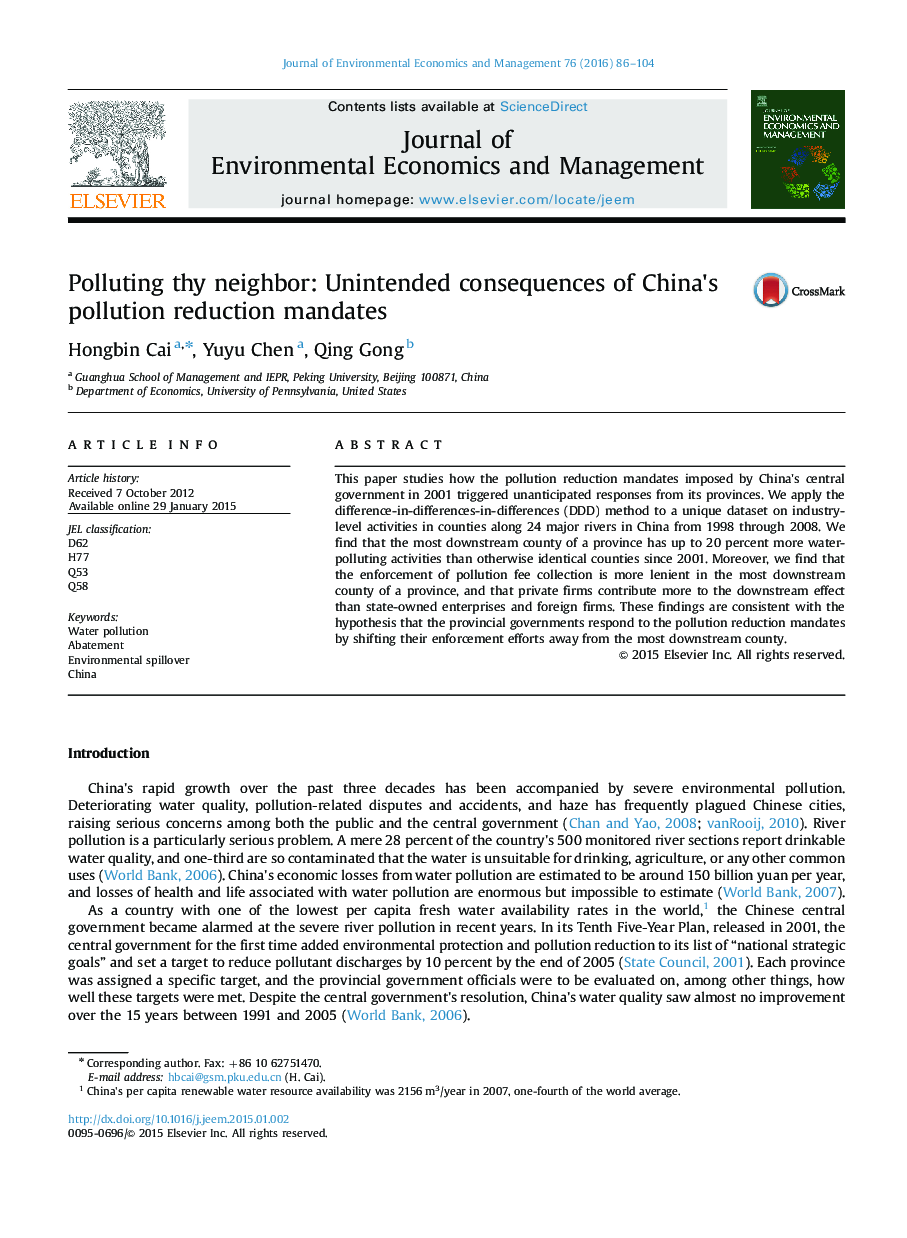| Article ID | Journal | Published Year | Pages | File Type |
|---|---|---|---|---|
| 959177 | Journal of Environmental Economics and Management | 2016 | 19 Pages |
This paper studies how the pollution reduction mandates imposed by China׳s central government in 2001 triggered unanticipated responses from its provinces. We apply the difference-in-differences-in-differences (DDD) method to a unique dataset on industry-level activities in counties along 24 major rivers in China from 1998 through 2008. We find that the most downstream county of a province has up to 20 percent more water-polluting activities than otherwise identical counties since 2001. Moreover, we find that the enforcement of pollution fee collection is more lenient in the most downstream county of a province, and that private firms contribute more to the downstream effect than state-owned enterprises and foreign firms. These findings are consistent with the hypothesis that the provincial governments respond to the pollution reduction mandates by shifting their enforcement efforts away from the most downstream county.
